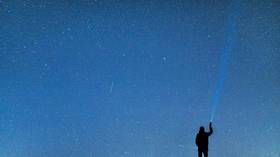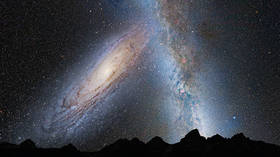Catch the final meteor shower of the DECADE: All you need to know about the Ursids

The annual Ursids meteor shower is already under way, but has yet to peak, so stargazers in the Northern Hemisphere still have time to prepare for the final cosmic extravaganza of the year, and the decade.
Those willing to brave the elements can expect to be treated to between five and 10 meteors per hour. On occasion, however, bursts of up to 100 or more meteors have been reported during showers over the past century, so this might be your lucky year.
Named after the constellations Ursa Major and Ursa Minor, the show is best viewed from the Northern Hemisphere around the time the Big Dipper is in the north-northeast part of the sky. Alas, astronomers in the Southern Hemisphere will miss out on the show.
Also on rt.com Russia to track EARTH-THREATENING asteroids from robot-inhabited nuclear-powered polar Moon baseTo see it best, set yourself up somewhere away from the glare of city lights (maybe with a good few layers and your preferred warm beverage of choice), and look to the constellation’s tail for the liveliest Ursids action.
Mercifully, the Moon will be in its thin crescent phase, so it won’t intrude on the pyrotechnic proceedings as they peak on the evening of December 22 and into the following morning.
The Ursids are thought to be produced by debris from Comet 8P/Tuttle, discovered back on January 5, 1858.
Most of these meteors are about the size of a grain of sand, though some can be as big as a pebble, but all travel at about 50,000 mph. These particles hitting the Earth’s atmosphere and burning up on impact is what makes for such a fine spectacle to end the year.
The shower also coincides nicely with the Northern Hemisphere’s winter solstice, the shortest day of the year.
Also on rt.com Cosmic dawn feed: Astronomers finally spot gas halos that power supermassive black holes (IMAGE)Think your friends would be interested? Share this story!














